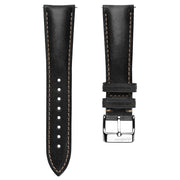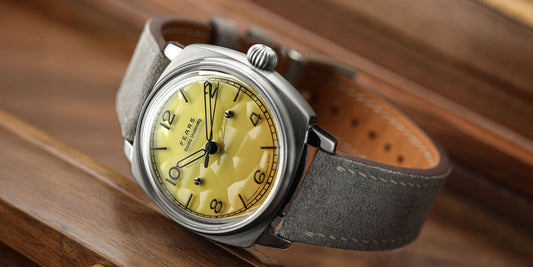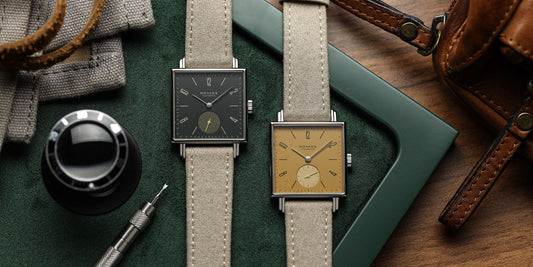Ask almost anyone with brothers or sisters and you’ll find that sibling rivalry is a very real thing. As humans, our youths are often dominated by jostling for position in one’s family, friend group, or society en masse until we find our place. We don’t have the benefit of being birthed as fully formed operators. We have no set goals from day one. We are empty vessels, blank canvases, that become filled with experience and embellished by the world around us as time passes.
But when it comes to related companies, the developmental process is often taken care of behind closed doors, by men and women sitting around a table and hashing out exactly what their newest creation should look like, how it should communicate, and what role it should play to assist and aggrandise its sibling.
Deploying a direct competitor to an existing entity rarely makes sense, but adding a complimentary player to the mix can inspire a new or neglected demographic to buy into the journey and scratch an itch that may have been unreachable due to financial means.

What makes Tudor so special?
Hans Wilsdorf conceived Tudor as an entry-level brand that promised the reliability of Rolex albeit with a slightly less luxurious bent. The trademark was registered in 1926 when Rolex itself was just 21 years old. Wilsdorf had identified the need for a more accessible product that offered the same quality as Rolex. Rather than devalue the well-earned status of Rolex (which was, already, making a name for itself as a trailblazer), he fleshed out the Tudor concept and ran with it, fitting the earliest models with off-the-shelf calibres to keep costs down.
Although the brand’s popularity waned towards the end of the 20th century, its relaunch in 2009 has become a near-flawless example of how to propel a brand to the very top of its price segment.
Of course, being bankrolled by Rolex (which isn’t short of cash), and being able to dine out on its association with the Crown is not something other brands can hope to replicate. Tudor has had the advantage of being too well funded to fail, but even that was no guarantee of commercial success.


While it is perhaps unsurprising that the brand was able to make a top-quality product from the get-go, the early models from Tudor’s renaissance were not all home runs (despite the cool, and now much-missed home plate hour markers on the brand’s Monte Carlo chronograph). It wasn’t until the brand launched the Heritage Black Bay that the watch-buying public really got to grips with what Tudor was and why they should now rush to buy its wares rather than products from similarly priced and market-mature competitors.
There are some (on occasion, this author included), who have lamented Tudor pivoting away from its more experimental pieces (like the misunderstood North Flag, or the moody but marvellous Fastrider Black Shield Chronograph) and, instead, embracing its role as “Rolex-lite”, but the commercial performance that followed this move is hard to argue with.
While Tudor had the opportunity to become Rolex’s skunk works, which, given the money behind the brand and the ingenuity and know-how within the Rolex family, could have been a lot of fun for real watch nerds, producing watches that either subtly reference old models or, in some instances, piggy-back directly on their desirability has proven to be a wise strategy.
I’m sure a lot of Rolex fans would love to see a 1:1 reissue of the 6538 Submariner, but Rolex has never hinted it intends to mine its own back catalogue in that way. However, the Black Bay Heritage line clearly references that reference and all those like it (even down to an almost identical colourway on discontinued reference M79230N-0009).
The release of the BB Heritage collection changed the game for Tudor and showed it the direction in which it must travel. Since that fateful drop, models such as the Black Bay GMT, the Black Bay Pro, and even the Black Bay Chronograph have openly traded on their visual similarity to long-since discontinued models from Rolex’s past. Meanwhile, the Black Bay 36 (which always had more than a little Rolex Explorer about the design) has seen more sizes and refinements added to prop up the cheaper end of the collection.
It is slightly bizarre to now observe a catalogue that is stuffed full of what are effectively homage pieces from another brand that would, were Tudor not connected to Rolex, be totally inappropriate (and heavily criticised for their lack of originality). And yet, Tudor has succeeded in giving fans of the Crown exactly what they wanted from Rolex, but in a more affordable package.
As uncomfortable as some stick-in-the-mud hardliners (like me) may find this, it is undeniably successful, and the watches themselves, as unoriginal as many of them may be, are incredibly well-made and robust for the price point. Still, almost exactly one hundred years after its foundation, Tudor is fulfilling its original remit to a T, and in a way, it never could have done so effectively when it first entered the market.

Back then, Rolex didn’t have the same kind of history to lean on. The Submariner and the GMT-Master wouldn’t hit the market until the fifties, and the Explorer II (that inspired the BB Pro) would not emerge until 1971. Although Tudor was never shy about making more affordable versions of Rolex’s wares (the Tudor Submariner, which debuted in 1954, even shared the same name as Rolex’s seminal diver and was very popular during its run), nowadays, the ability to work with Rolex’s extensive back-catalogue without releasing contemporary competitors is a perfect storm that the Wilsdorf Foundation (owner of both Rolex and Tudor) is keen to keep raging for as long as possible. And given the stunning success of the Shield over the past 15 years, it looks very likely to do just that.

















